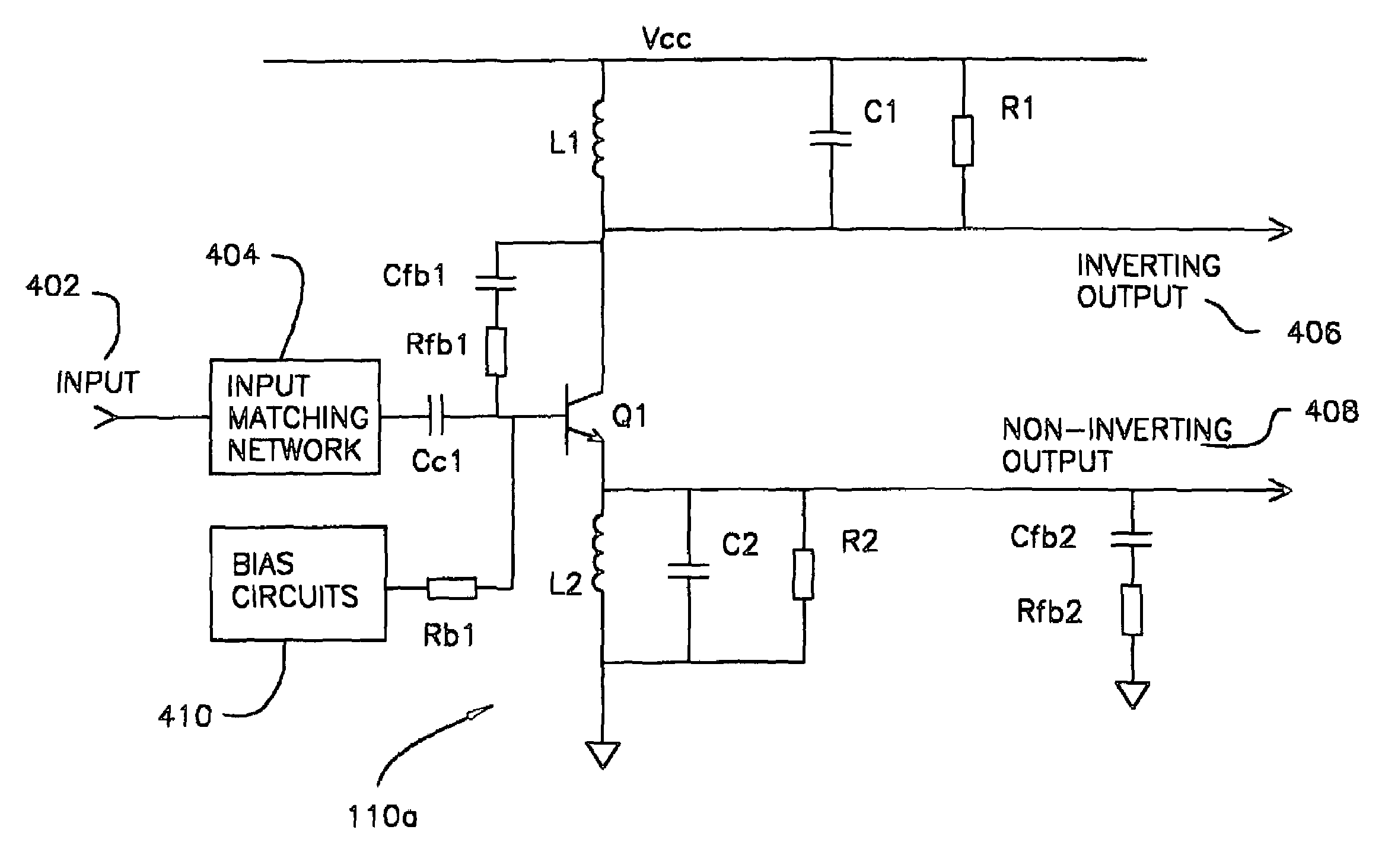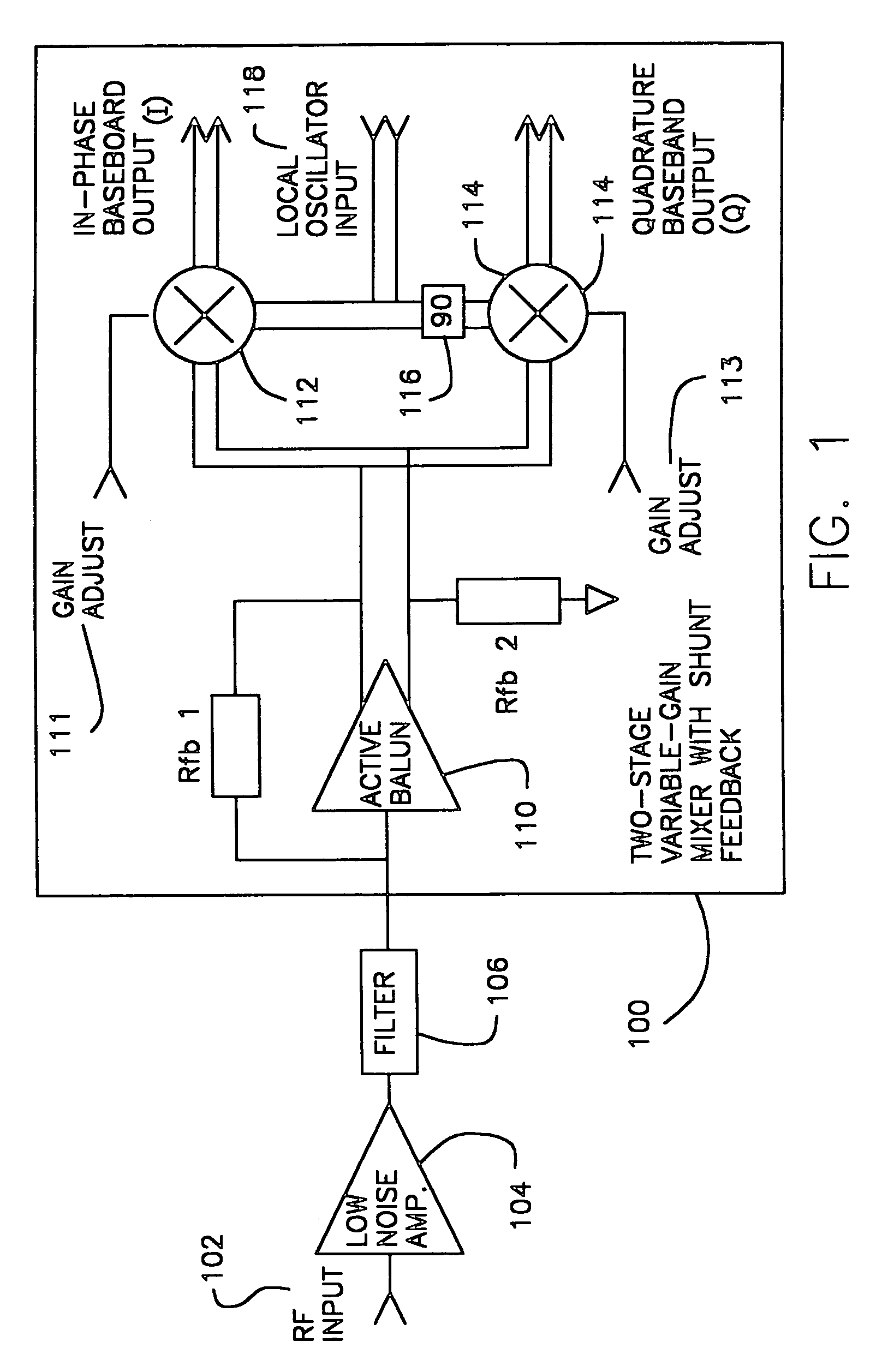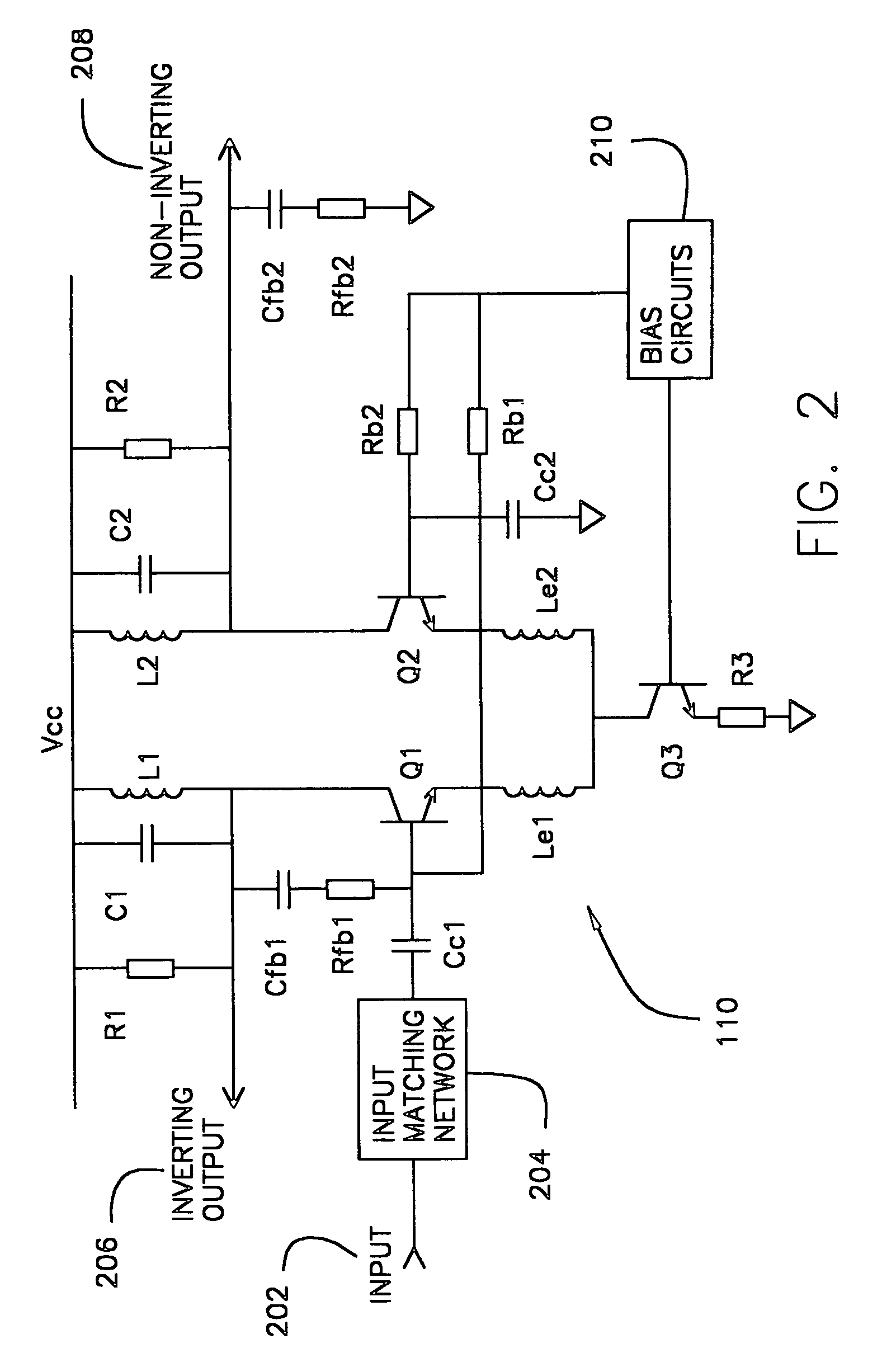Two-stage variable-gain mixer employing shunt feedback
a variable-gain, mixer technology, applied in the field of mixers and demodulators, can solve the problems of high noise figure, inability to simultaneously achieve all three objectives, and the feedback circuit disclosed in both patents does not provide a single-ended input controlled impedance, so as to achieve the effect of increasing noise figure (nf) and increasing power consumption
- Summary
- Abstract
- Description
- Claims
- Application Information
AI Technical Summary
Benefits of technology
Problems solved by technology
Method used
Image
Examples
Embodiment Construction
[0016]A block diagram of a two-stage demodulator is shown in FIG. 1, as it would typically be used in the radio-frequency (RF) front end of a cellular telephone handset. The demodulator 100 preferably accepts a single-ended RF signal input 102 from a band-select filter 106, which may typically be an off-chip mechanical filter, such as a SAW filter. As a design requirement, the demodulator may preferably present a particular input impedance (50 ohms in the present example) as a load for the filter, in order that the filter performs properly; this may be accomplished by designing the active balun 110 to provide a stable 50 ohm input impedance over the frequency range of interest, and by designing Low Noise Amplifier 104 to have a stable 50 ohm output impedance over the frequency range of interest. Preferably, an active balun circuit 110 with negative shunt feedback (Rfb1 and Rfb2) both amplifies the signal and converts it to differential form. The differential RF signal from the activ...
PUM
 Login to View More
Login to View More Abstract
Description
Claims
Application Information
 Login to View More
Login to View More - R&D
- Intellectual Property
- Life Sciences
- Materials
- Tech Scout
- Unparalleled Data Quality
- Higher Quality Content
- 60% Fewer Hallucinations
Browse by: Latest US Patents, China's latest patents, Technical Efficacy Thesaurus, Application Domain, Technology Topic, Popular Technical Reports.
© 2025 PatSnap. All rights reserved.Legal|Privacy policy|Modern Slavery Act Transparency Statement|Sitemap|About US| Contact US: help@patsnap.com



